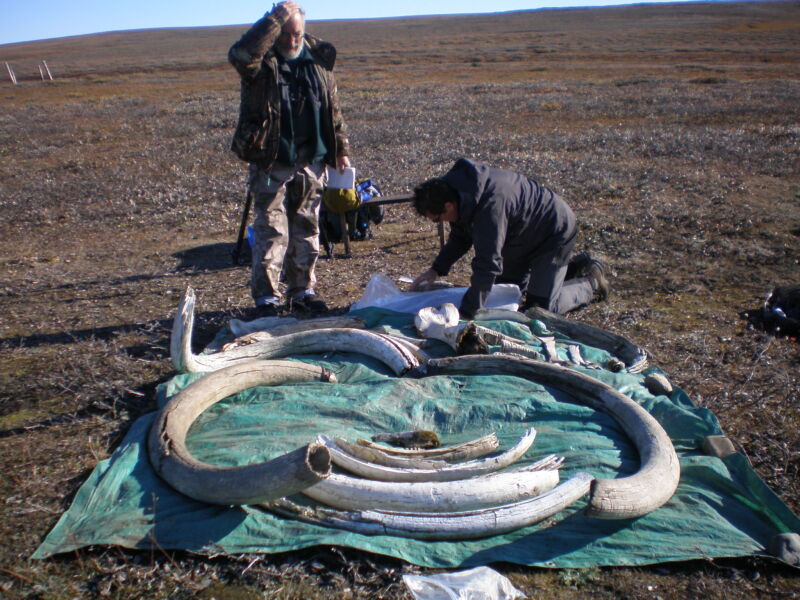Testosterone in tusks: Hormones in mammoth fossils excite paleontologists

Enlarge / Mammoth tusks collected at Wrangel Island, where some of the samples tested for hormones originated. (credit: Alexei Tikhonov)
Musth, a time of heightened testosterone levels and aggression in male elephants related to reproduction, has now been identified in woolly mammoth tusks. Remarkably, this is the first time hormones have been seen in the extant or the extinct. And it opens up an exciting new field of paleontology that the team behind the discovery calls palaeoendocrinology'-the study of hormones in ancient species.
A paper published on Wednesday in Nature describes that work, in which an international team of scientists studied African elephant and woolly mammoth tusks. Elephants and woolly mammoths are distantly related, and both belong to a group of animals known as proboscideans.
Testing tusksMichael Cherney is the lead author and research affiliate at the University of Michigan Museum of Paleontology. He said his team started by testing elephant tusks. We wanted to start with something that provided the best chance of recovering data, because we didn't know that we'd see any," Cherney told Ars in a video interview. Nobody knew for sure whether hormonal signatures existed in modern elephant tusks prior to this study, but the team was able to identify testosterone in the tusks.